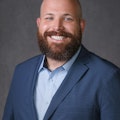As collision repair shop owners, we all know how difficult it can be to compete with the market dealerships. Their large glossy storefronts and seemingly endless resources may seem like an uneven playing field. However, I challenge you to reconsider the relationships we have with these market goliaths.
Instead of viewing them as competition, why not see them as potential partners?
As dealerships pull out of the collision repair business, it creates a big opportunity for shop owners to fill the void. However, to succeed in this highly competitive industry, we need to identify our unique value propositions within our markets.
Let's break it down. It's no secret that gross profit dollars heavily drive the dealer business model. To fully understand how to impact dealerships' gross profit positively, it's important to break down their departmental structure. Dealerships have three major revenue streams: parts, service, and sales. Understanding the role each of these departments plays in the overall business model is crucial.
The parts department is responsible for selling original equipment manufacturer (OEM) parts to customers and other departments within the dealership. The service department generates revenue through labor and any additional parts needed for repairs. Finally, the sales department brings in revenue through new & used vehicle sales.
So, where do third-party collision repair shops fit into this equation?
When a customer's vehicle is damaged, they often contact their trusted dealership for assistance. Statistically, customers are drawn to dealerships because of their brand loyalty/confidence, convenience, and professionalism. In most cases, the dealer has a natural flow of valuable leads.
Do you know where they are being referred to?
Is there an agreement already in place with another service provider?
Service
I find it safe to say that a shop regularly pulling procedures and writing proper repair plans will naturally write for more required calibrations over a shop that doesn't bother with research. Right? These calibrations are required and can be shared with the dealer service departments. This helps to establish a relationship with the dealer. However, if the dealer is naive to the market's prevailing rates for calibrations, they could be missing the mark big time. If we help connect their service team to the opportunity they are leaving on the table in order to boost their service department's GP, everyone wins. As the dealer service department receives more business, your shop establishes foundational trusting relationships, which leads to a continuous flow of business for both parties.
Parts
As professional repairers, most of us support the use of all OEM parts. If our teams share this passion for using original parts when performing repairs, then as owners we should warrant a realistic time for our writers to consult consumers on the importance of their crashworthiness, fit, and function under a subsequent accident, all in an effort to justify the use of all original parts. In turn, this stimulates the dealer's parts department GP with full OEM orders rather than the typical default list of whatever was not available aftermarket or recycled. This not only ensures the highest-quality repairs but also helps the dealers keep their loyal consumers loyal.
Sales
Now, what about the sales department? How can we work together to drive more revenue for both our businesses? If you look at a total-loss claim as optimistically as possible, you will find a huge opportunity. Through the discipline of pulling procedures and writing our best repair plans possible, the insurer's decision may be to total a vehicle. In this scenario, sure, we have helped protect the consumer from diminished value and/or an improperly repaired vehicle. But what if we researched some comparables on the vehicle's market value and empowered them with third-party data from other consumers' total-loss experiences to ensure maximum payout? Then, after our work is done, we follow with a referral business card to our dealer partner that saves the customer $500 on the purchase of a new or used vehicle? It's a win-win situation, as your shop gets paid for writing the repair plan/teardown/admin, the dealer gets a potential sale, and the customer is in awe over everyone's efforts.
As we coexist in the market, let's also collaborate and thrive together. Let's shift our mindset from competition to cooperation and see how we can help each other grow in this ever-changing industry. After all, it's not about outdoing or undercutting each other; it's about working together to provide the best possible service and solutions for our customers.
About the Author

Drew Bryant
Drew Bryant has been the owner of DB Orlando Collision since August 2011. A 20 group leader, in-demand conference speaker, and award-winning shop owner, Bryant takes a nontraditional approach to process implementation, lean process development, and overall operational experience while remaining dedicated to his staff's personal and professional development.
